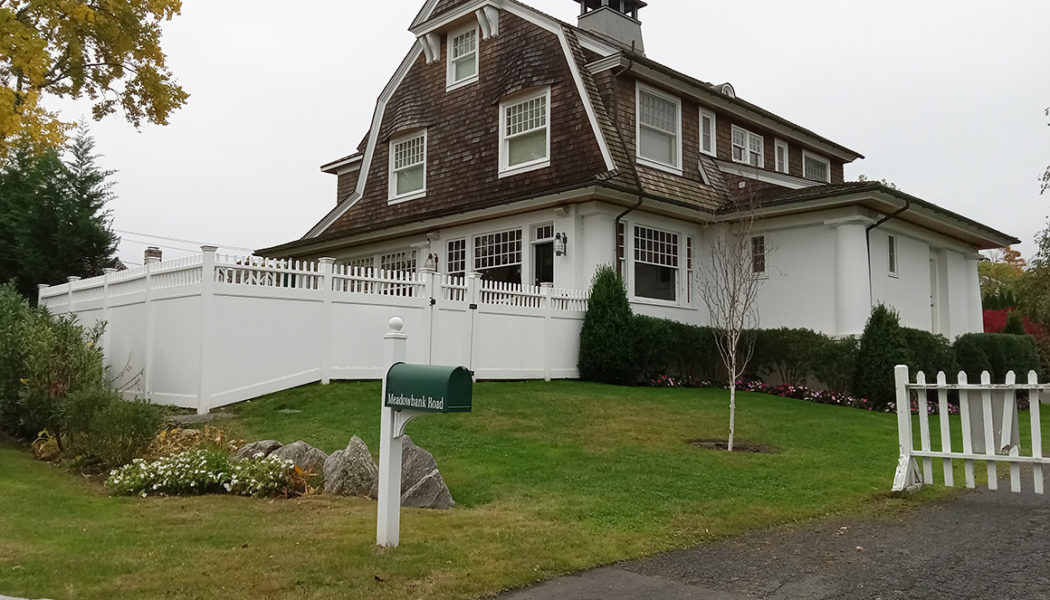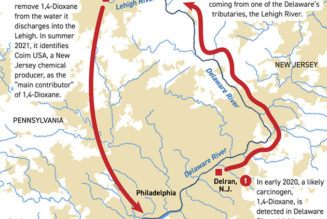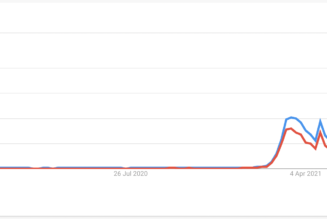GREENWICH, Conn. — Erik Furno knew it was a long shot when he and his wife applied for federal disaster aid to rebuild their flooded home after Hurricane Sandy struck in 2012.
The money was from a program targeted at helping low-income homeowners, a priority that would seem to rule out Furno, an architect living in a house valued at $2.6 million in one of the nation’s richest communities.
But a couple of years after applying — long after repairs were finished — Furno and his wife got a call from a Connecticut state agency that was distributing the federal money. They would receive the maximum grant available to reimburse their repair costs: $150,000.
“I was shocked,” Furno said in an interview. “They specifically had told me I probably wasn’t going to get it.”
The payment is among dozens uncovered by POLITICO’s E&E News that show how a disaster program overseen by the Department of Housing and Urban Development and designed to help needy people gave millions of dollars to people with expensive homes. Connecticut’s response to Sandy raises the kinds of fairness questions that emerge when catastrophes strike both wealthy and impoverished communities — an issue of growing importance as the Earth’s warming brings mega storms and other disasters to largely untouched parts of the country.
The owners of 62 houses worth more than $1 million along the Connecticut Gold Coast got aid to pay for repairs after Sandy, according to a review of records in dozens of towns. The homeowners received a total of $6.4 million, or 15 percent of the $44 million in HUD aid that went to home repairs in the state.
The median home value in Connecticut is $311,500, according to the U.S. Census Bureau.
The payments, first reported by E&E News, came after a little-noticed change to department regulations in 2013 allowed states to reimburse wealthy homeowners for home repairs. The change marked a significant policy shift in the only disaster program created to help low-income people. Though that change was limited to Sandy aid, HUD has since given other states similar flexibility after major disasters.
The owner of one $5.5 million waterfront home on Nearwater Lane in Darien, Conn., with five bedrooms and a swimming pool, received $150,000.
Another owner sold their home for $2.6 million after taking a $150,000 grant.
Twelve of the 62 homes are worth more than $2 million, according to E&E News’ analysis of local assessors’ records.
“It really stinks,” said former HUD analyst Carlos Martín, a Brookings Institution fellow and a leading expert on disaster aid. “That’s not who the disaster recovery program is intended to serve.”
Connecticut set no income limits for recipients of HUD aid after Sandy, unlike New Jersey, which gave home-repair money only to households with income below $250,000. New Jersey’s restriction was meant to “ensure limited recovery funds went to … households with the greatest recovery needs,” state spokesperson Lisa Ryan said in an email.
Officials from HUD and Connecticut, which distributed the federal aid, defended the reimbursements by pointing to Sandy’s devastating impact on wealthy communities, where some residents were forced to spend hundreds of thousands of dollars on repairs.
“HUD recognizes that in high-cost real estate markets there may be an unmet housing need that extends to properties and areas with high market values,” the department said in a statement.
The Connecticut Department of Housing said in its own statement: “Priority was given to low-income owners, and if there were available funds, then a higher income applicant could receive assistance.”
On Dec. 20, HUD disclosed plans to overhaul its disaster program, which has taken criticism from lawmakers and auditors who say it’s slow to dole out money and doesn’t do enough to help needy people. The potential changes would include efforts to “improve the allocation formula,” the department said in the Federal Register.
The findings about HUD aid in Connecticut follow an E&E News investigation earlier this year that showed how another disaster recovery program, run by the Federal Emergency Management Agency, favored rich, white communities when distributing grants that were used to raise homes above flood levels.
Connecticut housing officials say they followed federal rules when allocating the HUD money — a total of $159 million for rebuilding homes, businesses and infrastructure. Nearly 67 percent of the money has been spent on projects that benefit low- and moderate-income people, according to the state’s latest spending report. That includes $33 million to rebuild three public-housing complexes.
But state officials later concluded that the aid program had left unrepaired more than $1 million in home damage in Bridgeport, one of the state’s most impoverished cities.
In addition, a plan by Connecticut to build 100 rental homes to ease soaring housing costs after the storm yielded just 26 new apartments. Other damaged buildings, including a historic Black church in Bridgeport, failed to receive federal recovery funding. The church remains closed.
“The disaster recovery program is designed to fund people who are on their last legs,” said Sara Pratt, a former HUD deputy assistant secretary in charge of enforcing fair-housing laws. “These are people who are poor, have little and in many cases have lost everything.”
That wasn’t always the case in Connecticut, where many wealthier homeowners received HUD payments years after they repaired their homes. Eighteen of the 62 homeowners also got low-interest disaster loans from the Small Business Administration, according to records reviewed by E&E News.
“Wow. Wow,” said Evonne Klein, who oversaw the disaster aid program as Connecticut’s housing commissioner, after E&E News told her that some of the money had gone to the owner of a $5.5 million home.
“Look, I mean — I mean, the bulk of our funding went toward people who were not wealthy,” added Klein, who now heads the Connecticut Coalition to End Homelessness. “And we met all of the HUD requirements.”
‘That’s disgusting’
The 62 homes worth more than $1 million are nestled along harbors, coves and private beaches on the Connecticut Gold Coast, a string of exclusive New York City suburbs dotted with yacht clubs, clothing boutiques and health spas.
Ten of the homes are in private neighborhoods in Darien and Greenwich, where signs warn about “camera surveillance” and say “no trespassing” and “members only.”
Many of the owners work at investment firms and hold job titles such as chief executive officer, senior vice president and director of sales, according to their LinkedIn profiles.
William and Rebecca Lowry received $73,000 in HUD money after repairing their five-bedroom, 5,580-square-foot home in Greenwich. The house is in a private waterfront community established in the 1930s for “people of taste and refinement,” in a neighborhood where the average household income is $356,000.
The reimbursement came after two other federal agencies had already helped the Lowrys. The Small Business Administration provided a $421,300 low-interest disaster loan, and the Federal Emergency Management Agency gave them $90,000 to elevate their home above flood level, records show.
The Lowrys’ total federal aid was $584,000. The house is now valued at $3.4 million.
Attempts to reach the Lowrys by phone and mail was unsuccessful. Their lawyer, Edward Lerner, declined to comment.
“That’s disgusting,” said Yolanda Stinson, lead organizer of the Connecticut Coalition for Economic and Environmental Justice, when E&E News told her about the disaster aid. “That sounds — God. This makes my brain hurt right now.”
Twenty miles up the coast, a different story unfolded after Sandy.
In Bridgeport, a public-housing complex with 406 units was torn down after being flooded by the storm. Connecticut officials said $105 million was needed to replace the homes but spent only $10 million to rebuild one 93-unit complex in another location. The old site remains vacant — 13 acres of dirt, weeds and construction debris surrounded by a chain-link fence.
Bridgeport has the fourth-highest poverty rate in Connecticut.
“They could have used that money more constructively here than helping those rich people in Darien or Westport or Greenwich,” said Stinson, who lives in Bridgeport. “If they own that house in Darien, they didn’t need that kind of money.”
E&E News searched hundreds of property records and other documents in dozens of Connecticut towns to identify 335 homeowners who had received HUD disaster aid. The records provided unprecedented detail about the recipients, after state officials declined to provide their names and addresses to E&E News.
Among the findings from the data:
— Thirty-one of the 62 homeowners borrowed against the equity in their homes after the storm. The additional principal could be applied to repairs and paid off in monthly increments.
— Eighteen of the homeowners got low-interest disaster loans from the SBA to pay for repairs. Their average loan was $200,500, records show.
— Twenty-one sold their houses after using HUD money for repairs. The average sale price was $1.77 million.
HUD requires people who sell their homes within five years of getting disaster aid to repay the money, which is provided as a forgivable loan. The requirement aims to prevent homeowners from turning a quick profit off federal aid.
For Julianna and Matthew Spain, the five-year period on their $150,000 reimbursement expired in April 2021.
Six months later, they sold their 4,000-square-foot home in Darien for $2.575 million. They had bought the home in 2004 for $1.7 million.
The Spains declined to comment.
Jill Dell’Abate and Charles Mangold tapped multiple financial resources to repair their $1.5 million home in Old Greenwich.
They borrowed $87,300 from the SBA and refinanced their mortgage to generate $100,000 for repairs, records show. In addition, Dell’Abate said in an interview, they got $30,000 in disaster aid from FEMA, about $190,000 from flood insurance and a loan from her brother, who also used his airline miles to get the couple and their two children hotel rooms at the Stamford Marriott and the Hyatt Regency Greenwich immediately after Sandy.
Town inspectors approved the repair work in November 2013 — just over a year after Sandy hit.
Nearly two years later, in August 2015, Dell’Abate and Mangold received $92,000 from HUD.
“I was shocked — totally shocked,” Dell’Abate said.
Even with the HUD money, Dell’Abate said, she and her husband spent about $150,000 of their own money. But that spending paid off.
“The truth is, because I had to have a brand-new kitchen, the kitchen became a much nicer kitchen,” she said. “I probably made it up by increasing the house value because a lot of things were dated in the house.”
Quietly weakening regulations
The process that led to owners of pricey homes getting HUD money began with a wording change.
Buried inside a 21-page notice the department published in early 2013 explaining how Sandy aid could be spent were two crucial paragraphs. Together, they weakened regulations that had for years steered HUD disaster aid to people with financial needs or limited income.
In the roster of federal disaster programs, HUD aid is called the last line of defense.
It distributes money based on each state’s “unmet recovery need” — the cost of repairs that haven’t been done due to a lack of money from other disaster programs or insurance policies.
Although states have wide latitude in how they spend HUD aid, the projects must “primarily benefit low- and moderate-income people and areas,” Marion Mollegen McFadden, the department’s principal deputy assistant secretary for community planning and development, wrote in a recent letter to the Government Accountability Office.
She emphasized that point by underlining a word: HUD aid is “the only source of federal disaster recovery funds with this specific purpose.”
That has made HUD a lifeline for people who don’t have savings, insurance or the good credit score needed to get an SBA disaster loan. The aid is distributed through HUD’s Community Development Block Grant Program, an anti-poverty program created in 1974 to target urban decay.
“This is the only ballgame in town for households with low incomes if they’re looking to recover long-term from a disaster,” said Noah Patton, a housing policy analyst for the National Low Income Housing Coalition. “To send that money to higher income households is not what that money is for.”
HUD disaster aid has become more vital as climate change intensifies storms, floods and wildfires — and as officials recognize that other federal programs favor higher-income people and communities.
Congress has given HUD a total of $95 billion to distribute to states since the program was created in 1992, following the fury of Hurricane Andrew’s landfall in South Florida. Two-thirds of all HUD aid — $63 billion — has been approved in the past decade, including $15 billion in Sandy’s aftermath.
But as HUD disaster aid has grown, pressure has mounted to ease restrictions on how it can be spent. That pressure was acute after Sandy.
The storm’s catastrophic effects occurred in some of the nation’s wealthiest areas, including Nassau County, N.Y., Monmouth County, N.J., and Fairfield County, Conn. As a result, state officials faced pressure to extend HUD funds to wealthy communities. And many homeowners used their own money to repair their homes quickly, without waiting for federal payments.
“Anybody with significant resources isn’t going to want to wait around for [HUD] money to be available to take care of their rehab or reconstruction needs,” Stan Gimont, who managed HUD disaster aid during Sandy, said in an interview.
The Obama-era department responded by waiving two requirements in a notice published in March 2013.
One weakened a regulation that had required states to spend 70 percent of HUD aid on projects that benefit low- and moderate-income people. (In the department’s definition, those are people whose income is less than 80 percent of the local average.) Instead, states could devote just 50 percent of the Sandy disaster money to those recipients — a potential windfall for affluent and moderate-income residents.
That meant Connecticut was free to spend an additional $28 million of HUD money on projects that helped some of its wealthiest residents.
The other waiver was more significant: It let people who had already fixed their homes get HUD disaster aid after the work was done, as a reimbursement.
“The idea was, let’s see if we can’t put money back in their pockets for them having pressed forward on recovery as opposed to excluding them,” said Gimont, who’s now a senior adviser at Hagerty Consulting, a firm of disaster experts.
Previously, homeowners typically received HUD funds only if they hadn’t finished repairs. The restriction helped ensure that people who otherwise couldn’t afford it were able to pay construction contractors and rebuild.
The wording change shifted millions of dollars toward richer people. Connecticut gave out $9.4 million in reimbursements after Sandy, according to E&E News’ analysis. More than half — 55 percent — went to the owners of homes worth more than $1 million.
Other HUD money went to people who needed it before they could do the repairs. The state provided $34 million to 166 homeowners so they could hire contractors for repair work. Just eight of those homes were worth more than $1 million.
Some disaster specialists say the large amount of HUD money that went to million-dollar homes indicates a failure to notify lower-income people.
“It’s very hard to believe there were not less affluent homeowners who needed help,” said Madison Sloan, director of disaster recovery at Texas Appleseed, an advocacy group that has filed legal challenges over HUD disaster spending in Texas. “That suggests the outreach for the program was inadequate and didn’t reach people who were eligible for aid and needed it.”
One city HUD overlooked
Connecticut documents obtained by E&E News through public records requests show that lower-income homeowners generally received HUD repair money before their higher-income counterparts, indicating that needier people were the priority when the state approved grants.
“We got the bulk of our money out to the most needy folks,” said Klein, the former Connecticut housing commissioner.
But other records show that when it came to the crucial step of telling homeowners that HUD money was available for repairs, Connecticut shunned one of the poorest and most vulnerable cities.
A couple of years after Hurricane Sandy, state officials visited Bridgeport and realized that their outreach in the coastal city of 148,000 had fallen short.
“[M]any residents seemed unaware of opportunities to apply for assistance,” the state Department of Housing wrote in a report on Bridgeport’s unmet recovery needs in October 2015, adding that “many explained specific damages to their homes that had not been repaired.”
Some Bridgeport homeowners had received HUD aid for repairs — 25 homeowners got a total of $1.7 million, records show
But the housing department found that the unrepaired damage to Bridgeport homes was at least $1.1 million, and the actual amount “may be significantly greater.”
It’s “extremely important” for states to target vulnerable populations such as low-income residents, HUD said in a 2016 webinar on disaster aid. “It’s often these populations that may have been the most impacted, the most in need of resources, and the most difficult to reach.”
Outreach is essential with HUD aid because the money doesn’t become available until months or years after a disaster, in contrast to FEMA aid, which is provided immediately after an event. HUD itself does no local outreach, leaving the task to state and local officials.
“A lot of low- to moderate-income households don’t know the [HUD] program exists, so they don’t apply,” said Martín, the Brookings expert and former HUD analyst.
Bridgeport homeowners were hit hard by Sandy, according to the state: The storm damaged 574 homes, the third-highest toll among Connecticut municipalities.
But when Connecticut set up intake centers in early 2013 to help homeowners fill out applications for HUD aid, it excluded Bridgeport.
Five intake centers were opened along an 80-mile stretch of the Connecticut coast, including in Fairfield and Milford, the two towns that had more homes damaged than Bridgeport. Both towns are upper-middle-class, with populations that in 2012 were at least 85 percent white.
Intake centers are considered crucial for informing low-income people that HUD aid is available, said Pratt, the former HUD official in charge of enforcing fair-housing laws.
“For poor people, a physical location is one of the two most common ways that people reach out for assistance. The other is by phone,” Pratt said.
The nearest intake center to the most-damaged part of Bridgeport was 5 miles away, in Fairfield. But 26 percent of Bridgeport households did not have a car in 2013, according to census data.
E&E News found that just 16 percent of Bridgeport homeowners who sustained damage applied for HUD money, one of the lowest rates among the 18 Connecticut towns in which Sandy had damaged at least 50 homes.
The five towns with intake centers had some of the highest application rates — 28 percent altogether.
Connecticut did not answer questions about the locations of its intake centers.
Failing to put an intake center in Bridgeport “certainly raises questions about whose recovery Connecticut was prioritizing,” said Adam Gordon, executive director of the Fair Share Housing Center in New Jersey, which successfully challenged New Jersey’s spending plan for HUD money after Sandy.
‘Rich get richer’
The Rev. Elvin Clayton stepped carefully through the basement of his vacant church building, brushing away cobwebs as he navigated a space that’s been unused for a decade.
“You wouldn’t believe how nice this actually looked down here,” Clayton said during a recent visit.
Walters Memorial African Methodist Episcopal Zion Church is a historic site in Bridgeport, a one-time stop on the Underground Railroad and a vestige of a former local Black community called Little Liberia.
Since 1882, the church has occupied the corner of Gregory and Broad Streets in Bridgeport’s South End; a flood-prone area cut off from the rest of the city by Interstate 95 and railroad tracks.
The church building has been closed ever since Sandy’s floodwaters smashed through its ground-floor windows and filled the basement. The water ruined classrooms, offices and equipment, and buckled the sanctuary floor.
Today, the floor remains damaged, the basement is a skeleton of wall studs, there’s a hole in the roof, windows are broken and the exterior siding is peeling off. Parishioners worship in the education building next door and hold funerals in other churches, when they’re available.
“I hate to say it,” Clayton said, “but it’s not a church.”
The disrepair illustrates another feature of HUD disaster aid: The money is limited.
When states get a HUD block grant for disaster recovery, they decide how to spend the money through a process that creates competition among communities and projects.
The church didn’t get HUD aid because Connecticut excluded religious organizations and other nonprofits from receiving the funds. Housing reconstruction and infrastructure repair and improvements were the state’s top priorities.
Clayton said the church’s insurance claim was denied, but he’s not sure of the details because he became pastor two years after Sandy.
But Clayton does understand the politics of HUD disaster aid.
“The squeaky wheel will get the oil,” Clayton said. “You’ve got a pastor and 100 members versus all those towns and homes.”
Disrepair also hovers across Bridgeport’s South End, where flooding from storm surge and an archaic sewer system is chronic. The overflows send a toxic mix of stormwater and untreated sewage into streets, backyards and basements.
“Any time there’s a heavy rainstorm, there’s flooding there,” said MaryAnn Provey, a former president of a South End apartment cooperative that suffered heavy damage in Sandy. “People were having sewage overflow into their basements and the streets, and that’s never been dealt with.”
A relic of Connecticut’s industrial past, Bridgeport and its urban landscape of smokestacks, bodegas and vinyl-sided tenements stand out on a coastline of lush suburbs and seaside villages.
It’s also, by far, the state’s most vulnerable municipality to flood damage, according to the Connecticut Institute for Resilience and Climate Adaptation.
In October 2014, Connecticut got $10 million in HUD disaster aid to help fix the flooding problems in the South End. The money is for building a new pumping station and a stormwater park with open space and recreational paths, and it would facilitate redevelopment of a 13-acre lot where a public housing complex was located until it was demolished in 2018.
Construction on the pump station and park was supposed to begin in September 2021. It still hasn’t started. The state Department of Housing said it “does not have a firm construction start date at this time.”
It’s not a surprise to Provey, a longtime advocate for Bridgeport’s South End.
“That’s the way it goes,” she said. “The rich get richer and the poor get poorer, especially in a situation like this.”
[flexi-common-toolbar] [flexi-form class=”flexi_form_style” title=”Submit to Flexi” name=”my_form” ajax=”true”][flexi-form-tag type=”post_title” class=”fl-input” title=”Title” value=”” required=”true”][flexi-form-tag type=”category” title=”Select category”][flexi-form-tag type=”tag” title=”Insert tag”][flexi-form-tag type=”article” class=”fl-textarea” title=”Description” ][flexi-form-tag type=”file” title=”Select file” required=”true”][flexi-form-tag type=”submit” name=”submit” value=”Submit Now”] [/flexi-form]









